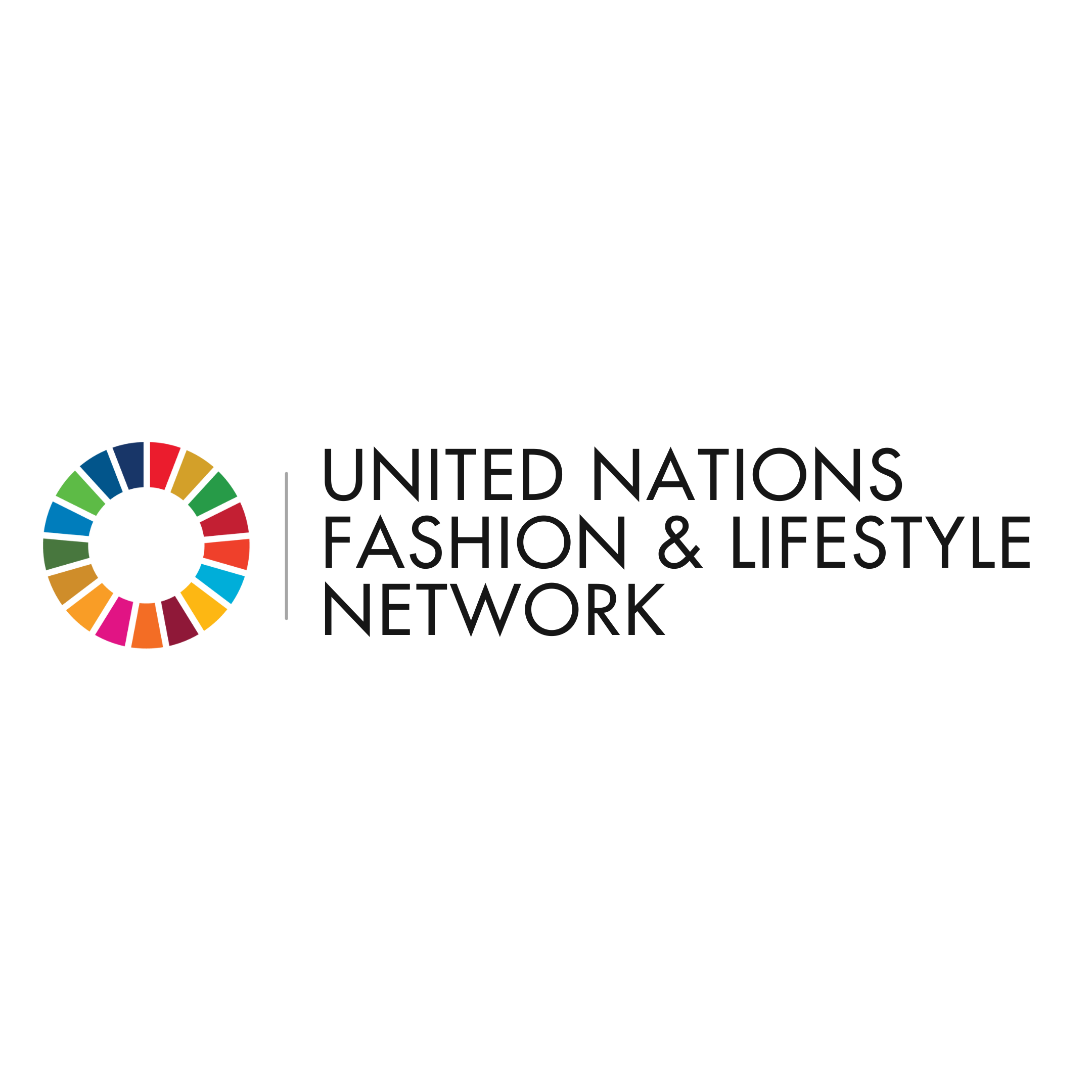Delzur
Delzur SAS BIC
(
Private sector
)
#SDGAction57907
Description
Delzur is a social enterprise that fosters deep connections between people and indigenous wisdom, weaving together heritage, craftsmanship, and sustainability. Rooted in respect for ancestral traditions and biodiversity, Delzur collaborates with indigenous communities to co-create handcrafted products and experiences that honor cultural diversity while ensuring regenerative economic opportunities.
Working closely with 12 indigenous communities and over 200 artisans—primarily women—Delzur is dedicated to amplifying indigenous-led solutions that safeguard cultural heritage and protect the environment. By blending ancestral techniques with contemporary design, Delzur ensures that traditional knowledge is valued, preserved, and integrated into ethical global markets.
Through strategic partnerships, Delzur implements fair trade models, promotes environmental sustainability, and strengthens community-led conservation efforts. Beyond commerce, Delzur engages in storytelling and advocacy, raising awareness about the profound role of indigenous artisans as guardians of cultural and natural wealth.
Delzur is a marketplace that connects indigenous entrepreneurs with valuable commercial opportunities and development support.
Delzur prioritizes capacity-building within indigenous communities by providing training, infrastructure support, and market access tailored to the needs of artisans. Our initiatives focus on skill development, design innovation, and sustainable material sourcing, ensuring artisans can thrive in a competitive global market while preserving their traditions.
Through collaborative programs, Delzur co-develops collections with indigenous entrepreneurs, adapting designs to meet market demands without compromising authenticity. The enterprise also facilitates knowledge exchange between artisans and industry experts, fostering innovation while maintaining cultural integrity.
In addition, Delzur is committed to promoting sustainable production techniques, integrating eco-friendly dyes, regenerative materials, and circular economy principles to minimize environmental impact.
Delzur was founded by LOVT GmbH and Fundación Hilo Sagrado, two organizations dedicated to social impact and cultural preservation.
The enterprise is supported by an advisory board consisting of indigenous leaders, environmental law protection experts, and industry professionals, ensuring that its mission remains aligned with both artisan needs and market dynamics. This board provides strategic insights on sustainability, ethical trade, and policy advocacy, strengthening Delzur’s impact and guiding its long-term vision.
Delzur operates under a collaborative governance model, working closely with social impact investors, cultural preservationists, and sustainable fashion advocates. It also fosters partnerships with NGOs, conservation groups, and fair trade organizations to expand opportunities for indigenous artisans and amplify their global reach.
Delzur measures its impact through key indicators, including:
Economic Growth: Increasing income for indigenous artisans through fair trade practices, ensuring sustainable livelihoods.
Cultural Preservation: Supporting traditional craftsmanship by integrating indigenous knowledge into contemporary markets.
Environmental Sustainability: Implementing responsible production methods and promoting regenerative business practices.
Community Engagement: Strengthening local economies by reinvesting a portion of revenue into education, infrastructure, and conservation efforts.
To date, Delzur has:
Partnered with 12 indigenous communities and 222 artisans.
Developed exclusive handcrafted collections for global markets.
Contributed to the preservation of traditional weaving, beading, and natural dyeing techniques.
Advocated for ethical supply chains and indigenous-led enterprises in the global sustainability discourse.
Fundación Hilo Sagrado, Wildlife Works, Escappy, NESsT, R.I.S.E Artisans, Build a Nest, ethical fashion brands, sustainable tourism initiatives, conservation organizations, and global retailers committed to fair trade and cultural preservation.
SDGS & Targets
Goal 1
End poverty in all its forms everywhere
1.1
By 2030, eradicate extreme poverty for all people everywhere, currently measured as people living on less than $1.25 a day
1.1.1
Proportion of the population living below the international poverty line by sex, age, employment status and geographical location (urban/rural)
1.2
By 2030, reduce at least by half the proportion of men, women and children of all ages living in poverty in all its dimensions according to national definitions
1.2.1
Proportion of population living below the national poverty line, by sex and age
1.2.2
Proportion of men, women and children of all ages living in poverty in all its dimensions according to national definitions
1.3
Implement nationally appropriate social protection systems and measures for all, including floors, and by 2030 achieve substantial coverage of the poor and the vulnerable
1.3.1
Proportion of population covered by social protection floors/systems, by sex, distinguishing children, unemployed persons, older persons, persons with disabilities, pregnant women, newborns, work-injury victims and the poor and the vulnerable
1.4
By 2030, ensure that all men and women, in particular the poor and the vulnerable, have equal rights to economic resources, as well as access to basic services, ownership and control over land and other forms of property, inheritance, natural resources, appropriate new technology and financial services, including microfinance
1.4.1
Proportion of population living in households with access to basic services
1.4.2
Proportion of total adult population with secure tenure rights to land, (a) with legally recognized documentation, and (b) who perceive their rights to land as secure, by sex and by type of tenure
1.5
By 2030, build the resilience of the poor and those in vulnerable situations and reduce their exposure and vulnerability to climate-related extreme events and other economic, social and environmental shocks and disasters
1.5.1
Number of deaths, missing persons and directly affected persons attributed to disasters per 100,000 population
1.5.2
Direct economic loss attributed to disasters in relation to global gross domestic product (GDP)
1.5.3
Number of countries that adopt and implement national disaster risk reduction strategies in line with the Sendai Framework for Disaster Risk Reduction 2015-2030
1.5.4
Proportion of local governments that adopt and implement local disaster risk reduction strategies in line with national disaster risk reduction strategies
1.a
Ensure significant mobilization of resources from a variety of sources, including through enhanced development cooperation, in order to provide adequate and predictable means for developing countries, in particular least developed countries, to implement programmes and policies to end poverty in all its dimensions
1.a.1
Total official development assistance grants from all donors that focus on poverty reduction as a share of the recipient country's gross national income
1.a.2
Proportion of total government spending on essential services (education, health and social protection)
1.b
Create sound policy frameworks at the national, regional and international levels, based on pro-poor and gender-sensitive development strategies, to support accelerated investment in poverty eradication actions
1.b.1
Pro-poor public social spending
Goal 5
Achieve gender equality and empower all women and girls
5.1
End all forms of discrimination against all women and girls everywhere
5.1.1
Whether or not legal frameworks are in place to promote, enforce and monitor equality and non‑discrimination on the basis of sex
5.2
5.2.1
Proportion of ever-partnered women and girls aged 15 years and older subjected to physical, sexual or psychological violence by a current or former intimate partner in the previous 12 months, by form of violence and by age
5.2.2
Proportion of women and girls aged 15 years and older subjected to sexual violence by persons other than an intimate partner in the previous 12 months, by age and place of occurrence
5.3
5.3.1
Proportion of women aged 20-24 years who were married or in a union before age 15 and before age 18
5.3.2
Proportion of girls and women aged 15-49 years who have undergone female genital mutilation/cutting, by age
5.4
Recognize and value unpaid care and domestic work through the provision of public services, infrastructure and social protection policies and the promotion of shared responsibility within the household and the family as nationally appropriate
5.4.1
Proportion of time spent on unpaid domestic and care work, by sex, age and location
5.5
Ensure women’s full and effective participation and equal opportunities for leadership at all levels of decision-making in political, economic and public life
5.5.1
Proportion of seats held by women in (a) national parliaments and (b) local governments
5.5.2
Proportion of women in managerial positions
5.6
Ensure universal access to sexual and reproductive health and reproductive rights as agreed in accordance with the Programme of Action of the International Conference on Population and Development and the Beijing Platform for Action and the outcome documents of their review conferences
5.6.1
Proportion of women aged 15-49 years who make their own informed decisions regarding sexual relations, contraceptive use and reproductive health care
5.6.2
Number of countries with laws and regulations that guarantee full and equal access to women and men aged 15 years and older to sexual and reproductive health care, information and education
5.a
Undertake reforms to give women equal rights to economic resources, as well as access to ownership and control over land and other forms of property, financial services, inheritance and natural resources, in accordance with national laws
5.a.1
(a) Proportion of total agricultural population with ownership or secure rights over agricultural land, by sex; and (b) share of women among owners or rights-bearers of agricultural land, by type of tenure
5.a.2
Proportion of countries where the legal framework (including customary law) guarantees women’s equal rights to land ownership and/or control
5.b
5.b.1
Proportion of individuals who own a mobile telephone, by sex
5.c
Adopt and strengthen sound policies and enforceable legislation for the promotion of gender equality and the empowerment of all women and girls at all levels
5.c.1
Proportion of countries with systems to track and make public allocations for gender equality and women’s empowerment
Goal 15
Protect, restore and promote sustainable use of terrestrial ecosystems, sustainably manage forests, combat desertification, and halt and reverse land degradation and halt biodiversity loss
15.1
By 2020, ensure the conservation, restoration and sustainable use of terrestrial and inland freshwater ecosystems and their services, in particular forests, wetlands, mountains and drylands, in line with obligations under international agreements
15.1.1
15.1.2
15.2
By 2020, promote the implementation of sustainable management of all types of forests, halt deforestation, restore degraded forests and substantially increase afforestation and reforestation globally
15.2.1
15.3
By 2030, combat desertification, restore degraded land and soil, including land affected by desertification, drought and floods, and strive to achieve a land degradation-neutral world
15.3.1
15.4
By 2030, ensure the conservation of mountain ecosystems, including their biodiversity, in order to enhance their capacity to provide benefits that are essential for sustainable development
15.4.1
15.4.2
15.5
Take urgent and significant action to reduce the degradation of natural habitats, halt the loss of biodiversity and, by 2020, protect and prevent the extinction of threatened species
15.5.1
15.6
Promote fair and equitable sharing of the benefits arising from the utilization of genetic resources and promote appropriate access to such resources, as internationally agreed
15.6.1
15.7
Take urgent action to end poaching and trafficking of protected species of flora and fauna and address both demand and supply of illegal wildlife products
15.7.1
15.8
By 2020, introduce measures to prevent the introduction and significantly reduce the impact of invasive alien species on land and water ecosystems and control or eradicate the priority species
15.8.1
15.9
By 2020, integrate ecosystem and biodiversity values into national and local planning, development processes, poverty reduction strategies and accounts
15.9.1
(a) Number of countries that have established national targets in accordance with or similar to Aichi Biodiversity Target 2 of the Strategic Plan for Biodiversity 2011–2020 in their national biodiversity strategy and action plans and the progress reported towards these targets; and (b) integration of biodiversity into national accounting and reporting systems, defined as implementation of the System of Environmental-Economic Accounting
15.a
Mobilize and significantly increase financial resources from all sources to conserve and sustainably use biodiversity and ecosystems
15.a.1
(a) Official development assistance on conservation and sustainable use of biodiversity; and (b) revenue generated and finance mobilized from biodiversity-relevant economic instruments
15.b
Mobilize significant resources from all sources and at all levels to finance sustainable forest management and provide adequate incentives to developing countries to advance such management, including for conservation and reforestation
15.b.1
(a) Official development assistance on conservation and sustainable use of biodiversity; and (b) revenue generated and finance mobilized from biodiversity-relevant economic instruments
15.c
Enhance global support for efforts to combat poaching and trafficking of protected species, including by increasing the capacity of local communities to pursue sustainable livelihood opportunities
15.c.1
SDG 14 targets covered
| Name | Description |
|---|
Deliverables & Timeline
Purchases from Comunities for 20.000 usd
Artisans impacted 232
Communities impacted 12
Resources mobilized
Partnership Progress

Feedback
Action Network

Timeline
Entity
Region
- Latin America and the Caribbean
Geographical coverage
Other beneficiaries
Indigenous Artisans & Communities – Over 200 artisans from 12 indigenous communities, primarily women, benefit from fair compensation, skill development, and sustainable economic opportunities while preserving their ancestral craftsmanship.
Women & Female Entrepreneurs – 90% of Delzur’s artisans are women, many of whom are the primary providers for their families. Our work strengthens their leadership, financial independence, and ability to invest in their communities.
Indigenous Youth & Future Generations – By promoting traditional craftsmanship and environmental stewardship, we create opportunities for indigenous youth to sustain their heritage while engaging with modern markets.
Local Ecosystems & Biodiversity – Delzur supports territorial conservation initiatives, ensuring that indigenous knowledge remains central to the protection of natural ecosystems and sustainable land management.
Global Consumers & Ethical Brands – By connecting conscious consumers and responsible brands with ethically sourced, high-quality handmade products, we encourage a deeper appreciation for indigenous knowledge and sustainable craftsmanship.
Cultural Preservation & Storytelling – Through advocacy and education, Delzur elevates indigenous voices and narratives, fostering respect for indigenous heritage while promoting more responsible and informed consumption.
More information
Countries

Contact Information
Diana Emilia Knops, Founder

